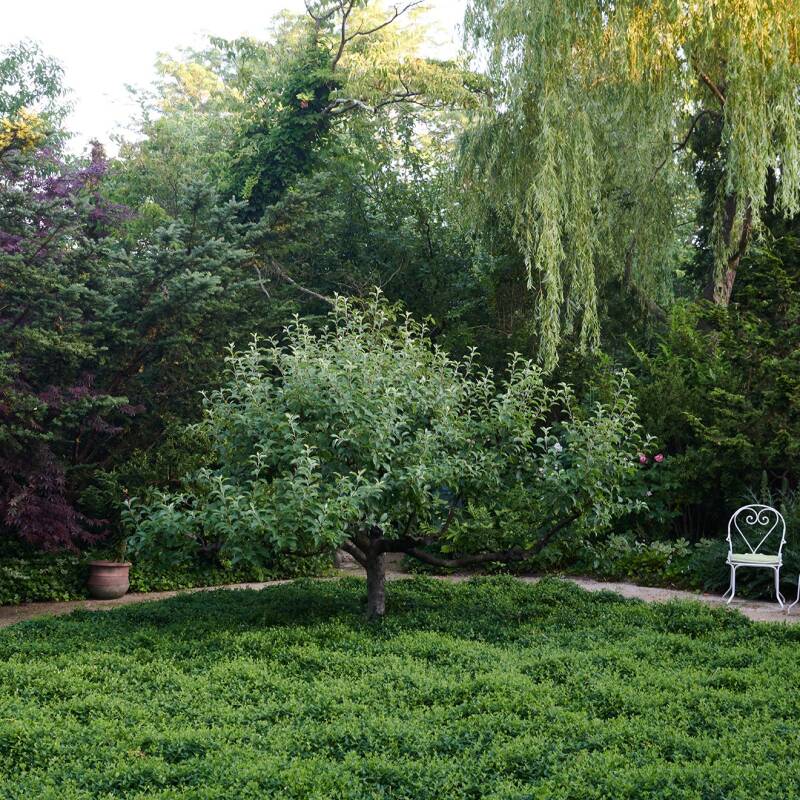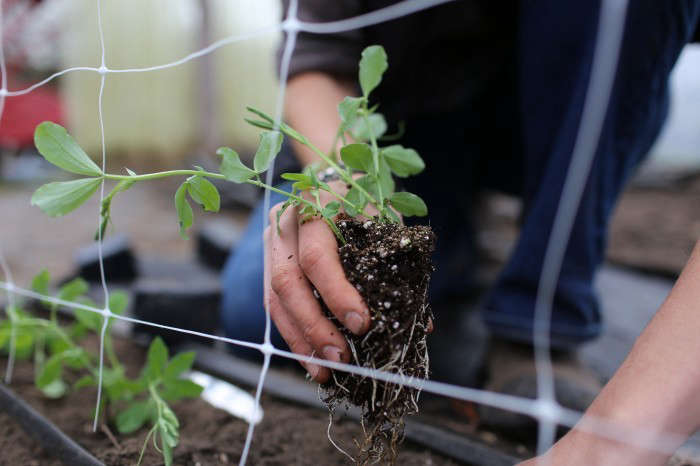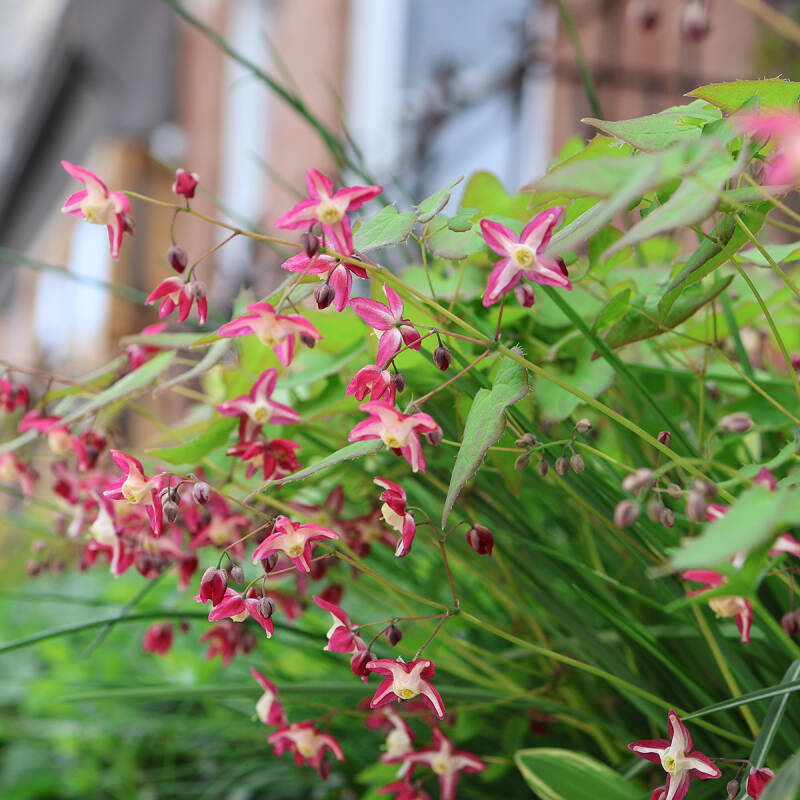“I love storytelling through design and art,” says Emily Thompson of Emily Thompson Flowers. “And what better material in the world to do that with than plants.” The sought-after floral designer, who has an M.F.A. in sculpture, taps into the wild and the witchy (“the dark arts,” she jokes) to create exuberant, gravity-defying installations and arrangements that celebrate the beauty and fierceness of nature—warts and all.

“I want people to understand how powerful these living things are,” she says. Using local growers and foragers whenever possible, she’s created showstopping work for fashion designers like Ulla Johnson and Jason Wu and museums such as The Frick Collection and the Whitney Museum of American Art; she’s even designed holiday decorations at the Obama White House.

“It all comes back to the living natures of plants,” she says. “We try to find ways to expose, dramatize, and, on some level, narrate them.” Below, she shares some of her floral favorites:
The tool you can’t live without?

I use my basic ARS clippers for everything including very serious branches. We also love Fiskars PowerGear 2 ratchet loppers for large branches. And I just got a Fiskars Tree Pruner Pole Saw for Christmas for foraging.
Favorite floral design book?

Constance Spry’s How to do the Flowers. The certainty!
I learned everything from her. I find a great kinship with her and the humbleness of what she strove to do. Her sense of materials is unmatched—and she didn’t have the resources we have now. She was ingenious as far as finding materials, procuring and growing them, and seeking ways to do things that nobody else would even bother trying with them.
I also love that she was wonderfully frumpy. She put on no airs, had no diva nature. She was a worker. She seemed like she loved to tackle the most ridiculous challenge: The most insane problem is her friend. She also understood context and how people would read flowers. I greatly admire her for her deep respect and clarity she gave to each flower and how she would show it to its greatest effect. She followed where the flower would lead her as opposed to forcing it into someone else’s idea of convention. Her imagination, inventiveness, and incessant reinvention—It’s all just so powerful.
Favorite place to visit for inspiration?

I love extreme landscapes: volcanos; craggy, rocky, difficult places; and my family’s home in the Northeast Kingdom of Vermont.
Splurge-worthy flowers?
They are all very expensive, and much more so since Covid! I love poppies of all kinds, heirloom chrysanthemums make me wild, and I have a bottomless thirst for fritillaria of all kinds. But some other rare things I covet: Bessara, trollius, and lotus.
Go-to vessel?

A cauldron. I don’t nearly have enough. I search for them on Ebay. I love a cast iron pot with a nice heavy base. Weight and counterweight are a huge part of our strategy because we always overbuild. To secure stems, we’ll do everything: add brick to the pot, use chicken wire, kenzans or Japanese flower frogs, build tape grids, work with brambles.
Favorite garden refuge?

I live near the Brooklyn Botanic Garden and inevitably find myself in the rock garden. It’s such an intimate spot. I grew up in a place with glacier boulders, lichen, and moss. My mom had a rock garden. I love when things seemingly emerge from nothing. These tiny, rare flowers. It’s glorious. That kind of landscape is my favorite realm of flowers.
My own small patch of earth in my Brooklyn home is second, as it is an absolute pit currently… but exciting as it holds so many possibilities in its rubble.
Pet peeve?
Dyed flowers.
Flower you just don’t like?
I am not a friend of hydrangea.
How do you come up with a concept?

Each project is different. But I always start with the moment in the season, and think about what we’re going to be frolicking among at that time. I then ask, “What are some of the greatest materials of that moment?” I usually begin with the largest things and then work our way down to the smallest. Then, I research and begin the hunt.
I do love to champion what are often considered “garbage flowers,” blooms that are not universally loved, like chrysanthemums. The chrysanthemum is an incredible flower. It’s bred to every inch of its life, but it’s incredibly long lasting, which is an enormous advantage. I like to glorify materials like that. It is joyous to me.
Favorite installation?

I love to make monumental installations, often with my fashion collaborators. A red-rock landscape of hot red and electric fuchsia azalea last spring was quite the ticket, then our massive lichen carpet with Ulla Johnson for her spring 2023 show was another real labor of love. This last was made with so many hands and brains in a meld that mirrored the organisms that compose lichen.
See also:
- Foraged Bracken: Autumn’s Most Beguiling Floral Design Element
- Required Reading: ‘Punk Ikebana: Reimagining the Art of Floral Design’
- 12 Questions with Garden Designer Wambui Ippolito














Have a Question or Comment About This Post?
Join the conversation (1)